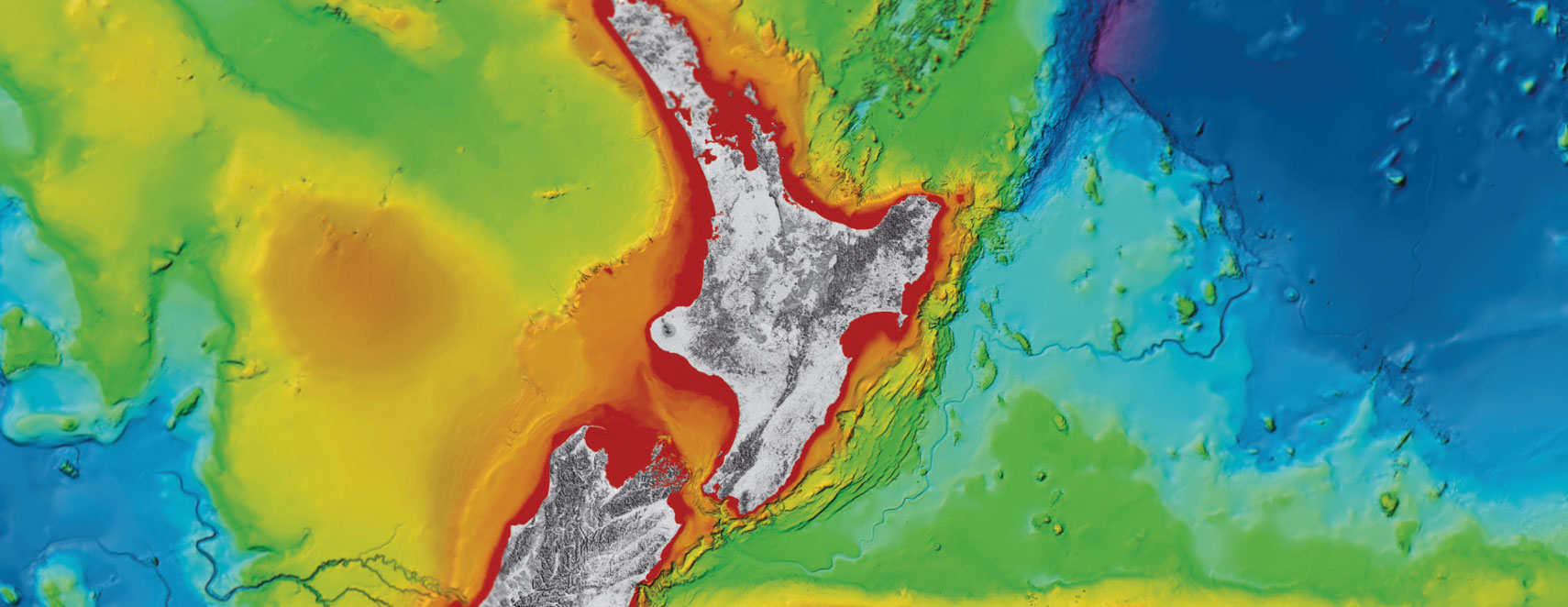
Revelle Blog #8 Seeps

Dr. Claire McKinley is a Research Associate from the University of Washington. She is currently working and reporting on the research occurring along the Hikurangi subduction zone on board the US research vessel Revelle.
We have been using all of our scientific equipment and ingenuity to hunt for seeps. They form where there are cracks or vertical faults that allow water to flow to the surface.
We are specifically targeting locations where we hope to find seeps because we want to measure deep fluid changes. It would be extremely difficult to collect porewater from the fault, and so we rely on being able to sample the places where water raises to the surface so we can access it. Seeps also allow methane gas that forms and builds up in pore spaces to escape from the sediment. This is why we search for bubbles when we map, they are a clear indication of the presence of a seep.
Once we have identified a likely seep location, we explore it with the remotely operated vehicle (ROV), Jason. Sometimes the seep area is large and very obvious, other times we search in a grid until we see bubbles or biological indicators of seeps with the cameras. Seeps are hubs for many interesting life forms, which makes it easy to identify them.
Because seeps often exist at depths where no light reaches, the water life is supported there not by photosynthesis, but by chemosynthesis. Chemosynthesis the process where chemicals, as opposed to sunlight, are converted to food energy.
The smallest living things at these locations are bacteria and archaea that consume chemicals like sulfide or methane for food. The bacteria form mats of many different colors on the seafloor. There can also be beds of mussels and clams on the seafloor.
The animal that I find most impressive and striking are the tube worms, they have no mouth or anus. Their tube sticks up into the water and it draws water with oxygen in it down into their roots to make food through chemosynthesis. A tube sticking 10cm out of the seafloor can have a root as long as two meters. Tube worms grow very slowly, and we have seen some that are probably as old as 400 years old on this cruise.
Coring and surveying with ROV Jason give you a sense of how quickly the seafloor can change from flat areas of sediment dotted with urchins and sea cucumbers to a seep jungle. The uniqueness of this ecosystem fills me with awe.
A difference in the type of sediment allows water to seep from deep in the sediment all the way to the seafloor surface and this supports an exceptional ecosystem forming an oasis around the seep location. This same life-giving seep water carries information for processes deep in the Hikurangi subduction zone to the surface and will help us understand what controls earthquake in the region
Disclaimers and Copyright
While every endeavour has been taken by the East Coast Lab Hikurangi Subduction Zone M9 to ensure that the information on this website is
accurate and up to date, East Coast Lab Hikurangi Subduction Zone M9 shall not be liable for any loss suffered through the use, directly or indirectly, of information on this website. Information contained has been assembled in good faith.
Some of the information available in this site is from the New Zealand Public domain and supplied by relevant
government agencies. East Coast Lab Hikurangi Subduction Zone M9 cannot accept any liability for its accuracy or content.
Portions of the information and material on this site, including data, pages, documents, online
graphics and images are protected by copyright, unless specifically notified to the contrary. Externally sourced
information or material is copyright to the respective provider.
© East Coast Lab Hikurangi Subduction Zone M9 - www.eastcoastlab.org.nz / +64 6 835 9200 / info@eastcoastlab.org.nz
